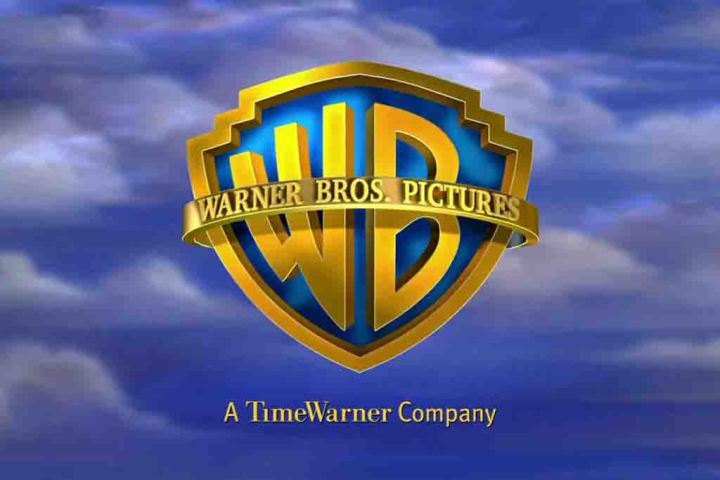1.) Warner Bros. pictures:

Warner brothers have changed their logo around 13 times over the past 97 years ad has had around about 200 different variations of the logo that has been made to appear in various different movies to say fit the theme or a certain character in that movie per se. Others of these variations of the logo, however, were created to show different shifts in leadership/ ownership or just to refresh the look and show a little bit of change. In 1966 we see the owner, jack warner, sell the company to steven arts inc. which saw a dramatic change and face lift, not only, to the company and brand, but also to the logo. However again this was changed up when Kinney services bought the brand changing the corporate name down the bottom of the shield and the logo to the iconic shield and clouds seen in the logo today. Although they have kept the shield and logo, there have been some changes to the corporate names, once again, since 1984.
"A consistent yet adaptive brand identity is the secret behind the tremendous success of Warner Bros. Over 100 years of its existence, the company has preserved its logo almost intact while slightly stylizing it to fit different movies. For example, the Batman version of the logo had spectacular wings. To celebrate the release of Polar Express, the design way customized with icicles. The film company pampers moviegoers with hundreds of logo variations, showcasing its passion for experiments." by Logaster logo maker.
2.) Disney

"Making magic since 1923, Disney is the undisputed king of the entertainment industry. From movies and TV shows to merchandise and theme parks, Disney now has a hand in almost everything…and it all started with a cartoon mouse." by logomyway.com
The Disney logo again has changed many a time over the years since it started. The original logo actually started off as a profile of mickey mouse which would revolve and change colors. This idea was both innovative and exciting and also showed some of the technological developments Disney was making at this time. Although this logo and the technology used were groundbreaking, Disney went through a massive overhaul of this logo in 1995 into the basis of the logo we all know and love today. This new logo featured a light blue castle with the writing "Walt Disney pictures" plastered across it. This was then changed again in 2006 to the logo we see throughout the movies we watch now. The logo we now know and love by Disney in my view should be seen as a testament to the technological advancements Disney as a company has undergone. This new logo also serves us as a symbol of Disney and the company it is representing.
3.) Paramount pictures:


"Paramount's logo is one of the most iconic images in all of film - but few people know its true origins. Most moviegoers are familiar with the logos of various Hollywood studios. From Disney's grandiose castle backdrop to the outer space view of Earth courtesy of Universal, every movie begins with a slew of logos for the various companies involved in the production, and the biggest is legendary. Of all these major movie houses, perhaps none are more iconic than that of Paramount Pictures. Its majestic view of a massive mountain encircled by a field of stars is intrinsically linked to memories of classics like The Godfather, Chinatown, and Raiders of the Lost Ark, as well as modern blockbusters like Transformers and Mission: Impossible. The first Paramount logos were inauspicious, but in 1914, the mountain and stars made their debut and cemented their place in film history. The Paramount logo may have changed over the past one hundred years, but its core foundation, the mountain, was present all the way back in the beginning. The exact origins of the logo are shrouded in mystery and are now firmly in the realm of Hollywood legend, but it's commonly accepted that the original mountain was based on the ranges seen by William Wadsworth Hodkinson during his youth in Utah, though the identity of the original artist seems to be lost to the ages. Originally, the mountain was a charcoal drawing but was redesigned in 1951. This new version is seemingly based on Artesonraju, a peak in Peru's Cordillera Blanca mountain range. Jan Domela was the chief matte painting artist for Paramount, and he painted the version of the mountain which would define the company for decades. The next major revision came in 1975 when the detailed matte painting was replaced with a more minimalist interpretation, rendered entirely in stark shades of blue. For the 75th anniversary of the company in 1987, artist Dario Campanile was commissioned to paint a new representation of the mountain, which would serve as the basis for a new version of the logo. This iteration was created entirely through cutting-edge CGI graphics. In 2002, the logo was redesigned once more, this time pushing the location of the mountain further away from the peaceful lake and growing it to the scale of a glacial peak, poking through the clouds with lots of snow and a somewhat more steely finish, complete with more spirited camera movements to accentuate the scale of the peak. Aside from the mountain, the other key element of the Paramount is its stars. Originally, there were twenty-four stars, one for each of the actors Adolph Zukor had signed to prominent contracts with the studio. This symbolic gesture lost much of its meaning as the old-timey studio mentality of long-term actor contracts began to simmer down, although the stars still remained in the logo. Curiously, the number of stars changed from twenty-four to twenty-two in the 1970s, though the reasons behind this change are unclear; it was probably just an aesthetic choice. Initially, the stars were as static as the rest of the logo, and then they were made to fade in after the mountain appeared. But as technology became more advanced, the stars took on a more dynamic role; starting with the 75th-anniversary logo (which actually debuted in December 1986, not in 1987), the stars would fly into view from behind the camera before encircling the mountain. In the latest iteration of the logo, one of the stars briefly skims the surface of the pristine blue lake, making ripples on the water before it reaches its spot on the mountain." Screen Rant.
Sorry I copy and pasted all of this, it was just hard to pick what was the best parts because I found it all to be well informed, but it is in quotation marks.
4.) Columbia pictures:

'The Columbia Pictures logo, featuring a woman carrying a torch and wearing a drape (representing Columbia, a personification of the United States), has gone through five major changes.
Originally in 1924, Columbia Pictures used a logo featuring a female Roman soldier holding a shield in her left hand and a stick of wheat in her right hand. The logo changed in 1928 with a new woman (Columbia, the female representative of America) wearing a draped flag and torch. The woman wore the stola and carried the palla of ancient Rome, and above her were the words "A Columbia Production" ("A Columbia Picture" or "Columbia Pictures Corporation") written in an arch. The illustration was based upon the actress Evelyn Venable, known for providing the voice of The Blue Fairy in Walt Disney's Pinocchio. Also, Columbia's Rare Rollercoaster Logo was reused by the Jake Salois Picture Corporation in 1999.
In 1936, the logo was changed: the Torch Lady now stood on a pedestal, wore no headdress, and the text "Columbia" appeared in chiseled letters behind her (Pittsburgh native Jane Chester Bartholomew, whom Harry Cohn discovered, portrayed the Torch Lady in the logo). There were several variations to the logo over the years—significantly, a color version was done in 1943 for The Desperadoes. Two years earlier, the flag became just a drape with no markings. The latter change came after a federal law was passed making it illegal to wear an American flag as clothing. 1976's Taxi Driver was one of the last films to use the "Torch Lady" in her classic appearance until 2019's Once Upon a Time in Hollywood, which used the classic appearance of the "Torch Lady" (with a minor alteration to add a Sony byline to the logo) to match the year (1969) the film takes place in.
From 1976 to 1993, Columbia Pictures used two logos. The first, from 1976 to 1981 (1976 to 1982 for international territories) used just a sunburst representing the beams from the torch. The score accompanying the first logo was composed by Suzanne Ciani. The studio hired visual effects pioneer Robert Abel to animate the first logo. The woman returned in 1981, but in a much smoother form described as resembling a Coke bottle.
The current logo was created in 1992 (same time as the television version’s debut) and started its use in films the year after when Scott Mednick and The Mednick Group was hired by Peter Guber to create logos for all the entertainment properties then owned by Sony Pictures. Mednick hired New Orleans artist Michael Deas, to digitally repaint the logo and return the woman to her "classic" look. Michael Deas hired Jennifer Joseph, a graphics artist for The Times-Picayune, as a model for the logo. Due to time constraints, she agreed to help out on her lunch break. The animation was created by Synthespian Studios in 1993 by Jeff Kleiser and Diana Walczak, who used 2D elements from the painting and converted it to 3D. In 2012, Jennifer Joseph gave an interview to WWL-TV: “So we just scooted over there come lunchtime and they wrapped a sheet around me and I held a regular little desk lamp, a side lamp,” she said, “and I just held that up and we did that with a light bulb." Deas went on to say, "I never thought it would make it to the silver screen and I never thought it would still be up 20 years later, and I certainly never thought it would be in a museum, so it’s kind of gratifying.' Wikipedia
Our group logo:
For our team logo, it is still in progress so I do not have any images at the moment, but our logo is a dragon head inside a circle, which symbolizes the fear that we are trying to convey through our media company, seeing as the main focus of our media production is thrillers and we are again trying to convey that fear aspect through our logo as people are scared and fearful of dragons. Also, our logo will GCH in Chinese writing before the productions writing in English, because we wanted to link the dragon and how its Chinese back to another aspect of the logo. Also, G, C, and H are all characters in the Chinese alphabet that look similar to the English characters so it will not be hard to understand what it is.














